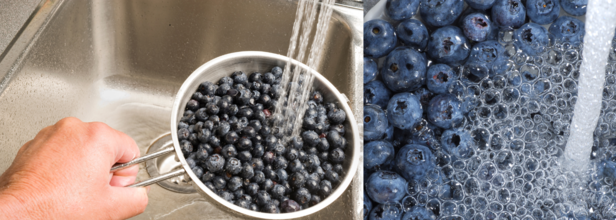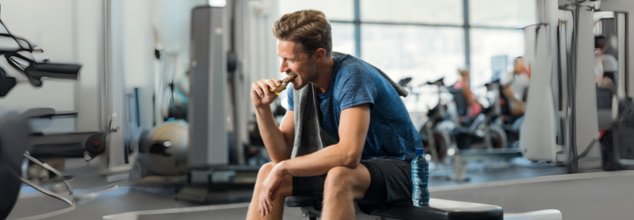- Health Conditions A-Z
- Health & Wellness
- Nutrition
- Fitness
- Health News
- Ayurveda
- Videos
- Medicine A-Z
- Parenting
- Web Stories
8 Essential Rules For Working Out In Winter

Winter workout (Credit: Canva)
It can really be tough to find inspiration to workout in winters. Heavy food, sleepiness and fear of sub zero temperatures all combined together are enough to keep us wrapped in their blankets. Moreove, there is an increased risk of injury, including frost bite, hyperthermia etc. But, you can really beat these teeny disruptions if you are careful about the following things:
Pay Special Attention To Workout Outfit
Your workout attire is more than just style—it is essential for comfort and safety. The most important factors to consider for outdoor workouts are wind chill and precipitation. Wind-resistant materials, such as specialized nylon, are crucial for protecting against the cold, especially when temperatures dip below freezing.
Layer up with water-resistant outerwear to shield yourself from rain or snow, and choose moisture-wicking fabrics like thermal leggings to prevent sweat from freezing on your skin. Noble cautions against outdoor exercise when the wind chill drops below -20°F, as it becomes hazardous.
Besides clothing, you need to ensure that you are warming up actively. Skipping a proper warm-up is a recipe for injuries, particularly in cold weather. "Your muscles are like rubber bands—if they're cold, they're more likely to snap, as suggested by fitness enthusiasts.
Begin indoors with light stretching or dynamic exercises like jumping jacks and lunges to heat up major muscle groups like your quads and hamstrings. If heading to a gym or class, a brisk walk can help elevate your heart rate.
Post-workout stretches are vital, especially after a cold-weather session. Rushing back into the cold or sitting down immediately can increase the risk of injury. Allow your body to cool down gradually with targeted stretches to maintain flexibility and avoid stiffness.
ALSO READ: What Are Telomeres? Are They Secret To Longevity?
Your head and hands are particularly vulnerable to the cold. A hat made of warm, breathable material will keep your ears protected, while gloves with touchscreen-friendly fingers allow you to manage your music or apps without removing them. Frostbite prevention is key, so don’t skip these essentials.
Drinking water is one of the most important part of working out. Cold weather might mask how much you sweat, but hydration remains critical. Amanda Kloots, creator of The Rope and The Dance, recommends room-temperature water, which is easier to drink and helps you stay hydrated before, during, and after exercise.
Shorter winter days often mean exercising in low light. Make sure you're visible to cars, cyclists, and pedestrians by wearing reflective items like jackets, shoes, or backpacks. In addition, you also must wear proper footwear toh support your outdoor activities. Invest in running shoes with good traction and replace them if they’ve lost their grip
The sun's UV rays can still cause damage, even on cold and cloudy days. Apply sunscreen during daylight workouts to protect your skin from burns and long-term harm. It is pertinent to that ultraviolet rays (UV) rays are harmful, particularly for the skin.
ALSO READ: Can Sourdough Bread Help You Sleep Better?
Healthier Popcorn Alternatives You Can Try For Your July 4 Movie Nights

Credits: Canva
The Fourth of July is usually all about fireworks, BBQs, and patriotic playlists—but let’s not forget another tradition that’s gained popularity in recent years: movie nights at home. Whether you’re winding down from a long day of celebrations or just skipping the crowd to watch classics under the stars, a cozy night in calls for sweatpants, blankets, and of course, snacks.
Popcorn may be the go-to, but this Independence Day, consider breaking from tradition with some revolutionary snack choices. Did you know there are plenty of whole grains you can pop for a lighter, crunchier twist? Sorghum, amaranth, quinoa, and more—these ancient grains bring unique textures and flavors without the pesky hulls that stick in your teeth.
Also Read: These Steps Will Wash Blueberries The Right Way And Remove Pathogens And Pesticides Residue
Not All Grains Pop—But They Puff Beautifully
Let’s clear things up: most ancient grains don’t pop into fluffy, buttery clouds like corn does. Instead, they puff when heated. So, if you’re trying them for the first time, expect a toasty crunch rather than big, airy bites. But what they lack in size, they make up for in taste, nutrition, and charm.
1. Sorghum
If you’re new to puffing grains, start with sorghum. It looks like tiny popcorn and delivers a similarly satisfying crunch. Lauren Harris-Pincus, MS, RDN, calls it a “gluten-free, fiber-rich, antioxidant-packed” snack that’s grown right here in the U.S.
Bonus: Sorghum doesn’t have a hull, so there’s zero risk of those annoying popcorn bits in your teeth. Sprinkle it over salads, soups, or even ice cream for an unexpected Fourth of July twist.
2. Amaranth
Amaranth is a quick-popper and packs serious nutrition—think protein, fiber, and minerals. Lisa Richards, nutritionist and author of The Candida Diet, notes that it’s gluten-free and nutrient-dense. Its tiny size makes it ideal for mixing into granola bars, muffins, or DIY cereals. Puffed amaranth adds a fun crunch to yogurt parfaits or fruit bowls at your 4th of July breakfast table.
3. Barley
While barley doesn’t exactly pop, it does crack and puff slightly, resulting in a chewy, nutty snack. It’s not the flashiest grain, but it delivers a mellow, toasted flavor perfect for a post-fireworks wind-down snack.
4. Buckwheat
Puffed buckwheat doesn’t just sound fun—it’s actually delicious. Crunchy and tender, this grain works best as a topping on oatmeal, fresh fruit, or nut-butter toast. If you’re not up for DIY puffing, try pre-puffed options like Lil Bucks for easy snacking.
5. Quinoa
Quinoa pops small, but brings bold flavor. While its shape doesn’t change much, its texture gets light and crisp. Try puffed quinoa on salads, in trail mix, or as a cereal replacement for a healthier holiday breakfast.
Also Read: This Year, Doctor's Day Reminded That Doctors Too Are Humans And Can Get Emotionally Exhausted
How to Puff Ancient Grains?
Puffing ancient grains is surprisingly simple—no oil required! Here’s how to do it:
- Heat a medium saucepan over medium-high heat until a drop of water sizzles and evaporates.
- Add grains in a single layer, and shake the pan frequently.
- Listen and watch: grains will crackle, puff, or lightly brown. Remove promptly to avoid burning.
- Each grain reacts differently to heat, so keep an eye on texture and color. Overheating can result in bitterness.
These Steps Will Wash Blueberries The Right Way And Remove Pathogens And Pesticides Residue

Credits: Canva
On Tuesday, the US Food and Drug Administration (FDA) announced a recall of 12,000 pounds of organic bulk blueberries which was distributed by Alma Pal International LLC. According to the agency, the blueberries have been tested positive for Listeria monocytogenes, a potentially dangerous bacteria known to cause foodborne illness.
READ: FDA Recalls Blueberries Over Listeria Risk Ahead of July 4th Festivities
Amid all this, one question that concerns many is how to wash blueberries the right way?
While water alone can remove debris, food scientist Bryan Quoc Le, Ph.D., says, as reported in marthastewart.com that it is not enough to eliminate pathogens or pesticide residue.
However, there are tips and tricks that can remove such residue. For this, your household staples like white vinegar or baking soda can work.
Vinegar's low pH makes it very effective at dissolving certain pesticide residues and inhibiting bacterial growth. Baking soda too works well when it comes to neutralizing bacteria through its alkaline nature. However, it may leave a bitter residue if it is not rinsed properly.
Also Read: Healthier Popcorn Alternatives You Can Try For Your July 4 Movie Nights
Why Isn't It Enough To Just Rinse Blueberries With Water?
Simply rinsing blueberries with water may wash away visible dirt, but it’s not enough to tackle bacteria, mold, or pesticide residues. According to Le, using vinegar or baking soda is more effective, as both alter the pH of the berry’s surface—creating an environment that disrupts microbial growth and helps extend shelf life better than neutral water.
Washing Trick: Why Do Baking Soda and Vinegar Work?
Baking Soda
As an alkaline cleaner, baking soda is effective against a different range of bacteria. However, it may leave a slightly bitter residue if not rinsed off thoroughly.
Vinegar
White distilled vinegar is ideal for cleaning produce. Its acidity helps break down certain pesticides—especially those with a basic pH—and inhibits bacterial growth. “It’s the pH that matters, not the vinegar type,” says Dr. Le. Apple cider vinegar works too, but white vinegar is more affordable and equally effective.
How To Clean Blueberries The Right Way?
For vinegar wash, follow these steps:
- Start with mixing 3 parts cold water to 1 part white vinegar. Use a large bowl to mix properly.
- Now, add blueberries and let it soak for 5 to 10 minutes.
- Wash your hands and then you can then wash the blueberries thoroughly, rub it with your hands to help loosen debris.
- Once done, drain the water and wash the blueberries again with running cold water to remove any vinegar residue
- Dry completely on a clean dish towel or paper towel before you store it in the refrigerator.
For baking soda wash, follow these steps:
- In a large bowl, dissolve 1 teaspoon of baking soda in 2 cups of cold water. Stir well until fully mixed.
- Gently add the blueberries to the solution and let them soak for 5 to 10 minutes. This helps loosen dirt, bacteria, and pesticide residues.
- Drain the berries and rinse them well under cool running water to remove any remaining baking soda.
- Spread the blueberries out on a clean dish towel or paper towels and pat them dry. Let them air dry completely before storing in the refrigerator to prevent mold growth.
Note: Make sure you do not soak the blueberries for longer than 15 minutes. Food scientist warns that the skin can begin to degrade if the blueberries are soaked for too long and it can cause flavors to dissolve in the cleaning solution.
Protein Bars Are Not As Healthy As You May Think They Are - Avoid These Components For Future Buys

(Credit-Canva)
When it comes to saving time, we have built many things, from quicker transportation to smart home appliances. These things reduce not just the process as well as the effort so that we can focus on more important things. Similarly, protein bars were not only an easy but also efficient way to get your daily nutrient intake. However, are they as healthy as they seem?
Less Protein, Lower Quality?
A new study published in Scientific Reports (Nature) raises questions about the actual nutritional value of many protein bars. The study found that a significant number of the 1,600+ bars tested contained less protein than advertised. Even more concerning, the quality of the protein in most bars was often poor, impacting how well your body can absorb it.
What the Study Found?
Researchers looked at information from a large online database of food products. They started with about 4,600 protein bars. Many of these bars were from the U.S., so it's likely that a lot of the 1,641 bars they ultimately tested are available where you shop. The researchers divided the bars into groups based on their protein type:
- Only plant protein (like from peas or rice)
- Only animal protein (like from milk)
- A mix of milk, egg, and soy protein
- A mix of milk, collagen, and soy protein
Many bars weren't actually "high protein"
While most bars got at least 20% of their calories from protein, about one-fifth of them didn't. This standard is actually stricter than what our food authorities consider "good" or "excellent" sources of nutrients.
Protein in some bars was hard to digest
How well the protein in the bars could be digested varied a lot, from less than half to over three-quarters. Surprisingly, some bars with proteins generally considered "high-quality" (like animal protein or soy) were harder to digest. High-quality proteins are important because they contain all the necessary building blocks your body can't make itself, and they're usually well-absorbed for muscle repair and growth.
Protein Bars: Go or No Go
Because so many people are trying to eat more protein, it's easy to think all protein bars are healthy. But this new study shows an important truth: the overall nutrition of a food can't always be judged by just one thing, like its protein content. Even if a bar has good protein, your body might not fully use it.
It's also worth remembering that protein bars are often highly processed. Eating a lot of these ultra-processed foods might be linked to health problems like a higher risk of obesity, heart disease, and type 2 diabetes.
On the other hand, for some people, protein bars can be very useful. If you have higher protein needs, or if your appetite isn't great (maybe due to medication or illness), a protein bar offers a convenient way to get a protein boost in a small serving. But even then, they shouldn't be your only protein source; they should be a supplement.
For better quality protein in a less processed form, consider options like Greek yogurt, cottage cheese, hard-boiled eggs, jerky, nuts, and seeds. These also offer other good nutrients like calcium, healthy fats, and fiber.
How to Pick a Healthier Protein Bar
If you still want to choose a protein bar, here are some tips:
Look for higher protein
Even if other ingredients affect how well protein is digested, it's still smart to choose bars with more protein. Ideally, this protein should come from animal sources like whey or milk, or from plant sources like soy or pea.
Check for low added sugar
While there isn't a strict rule for "low" added sugars, it's recommended to keep your added sugar intake to less than 10% of your total daily calories.
© 2024 Bennett, Coleman & Company Limited

